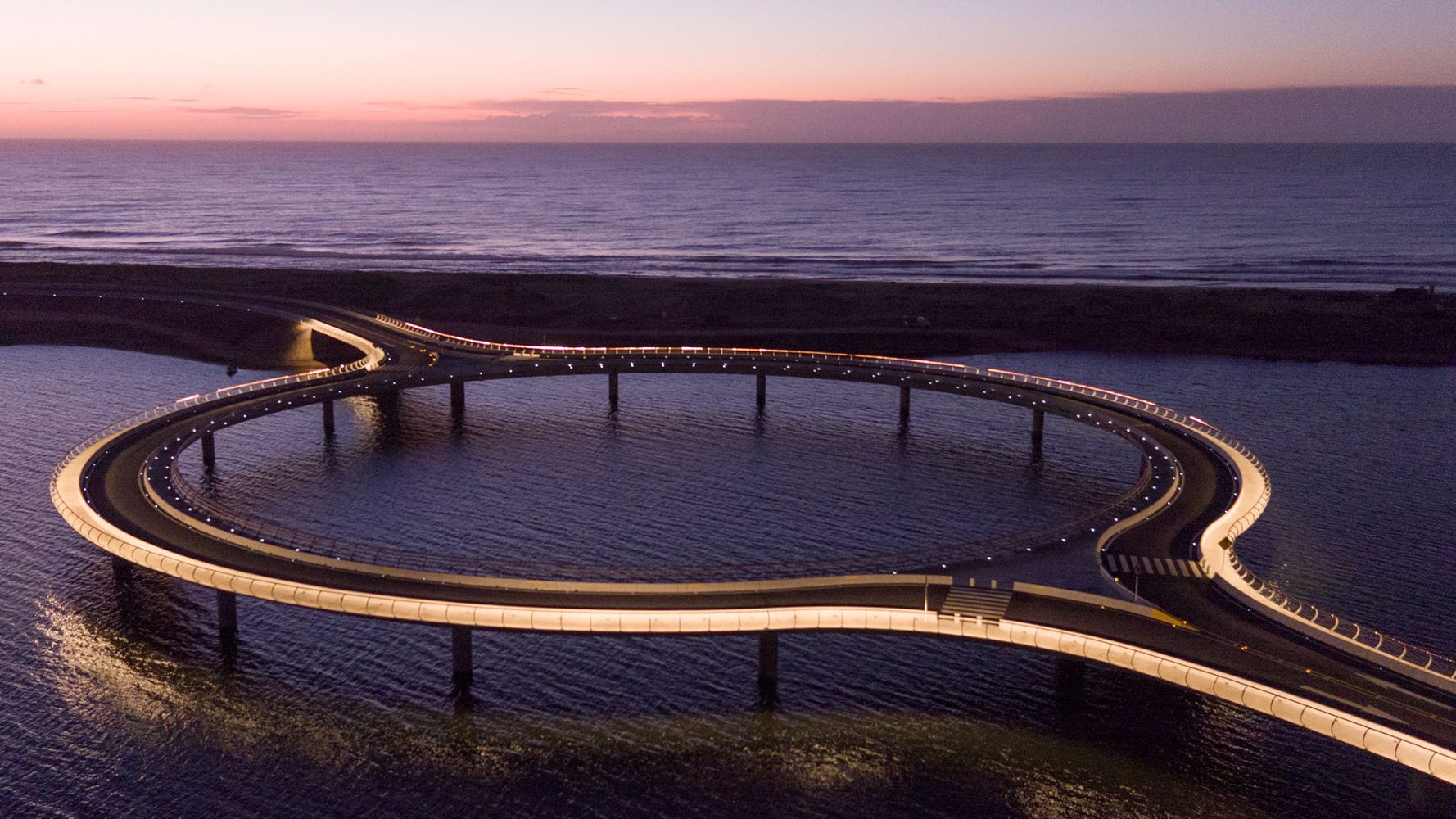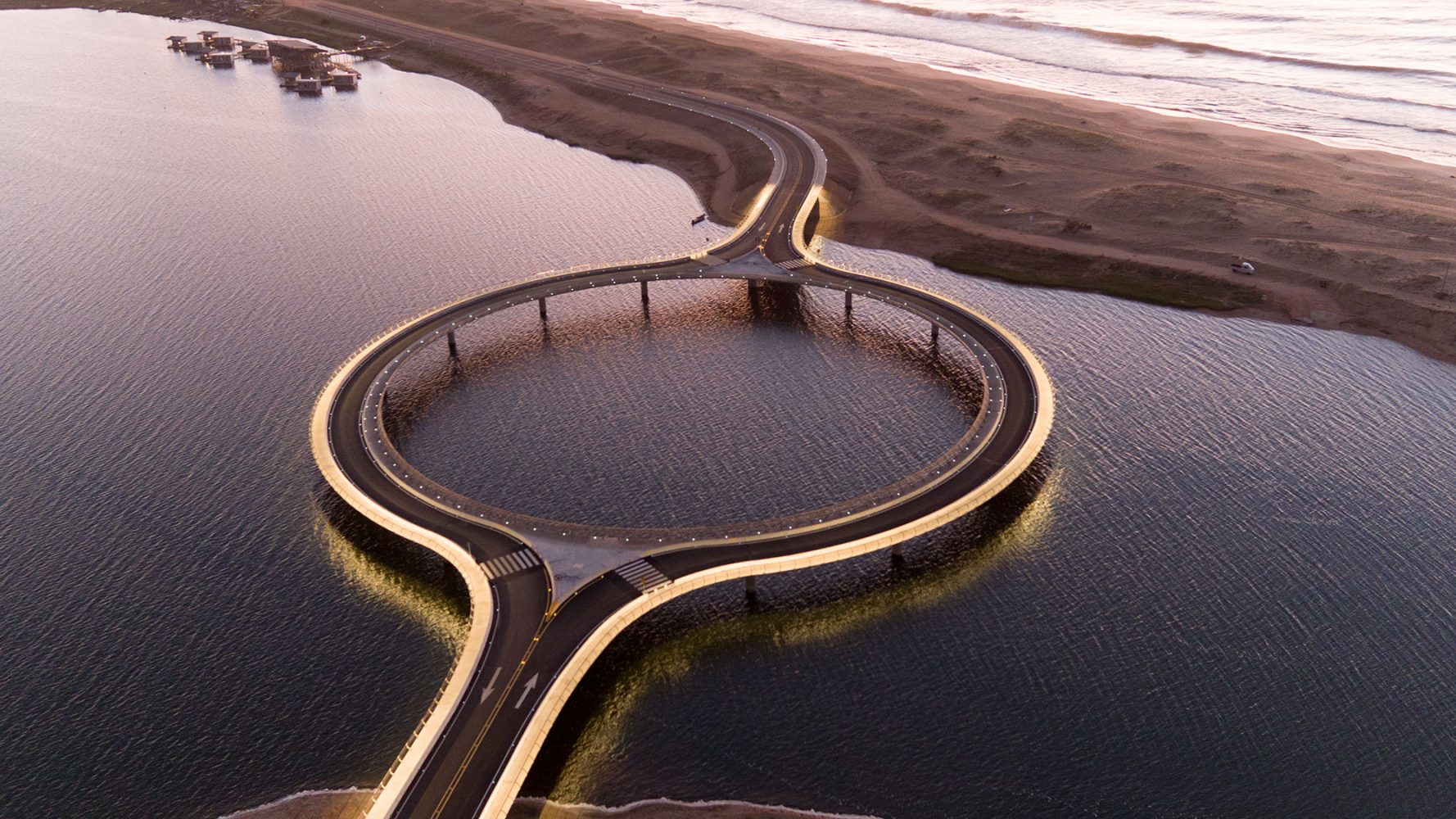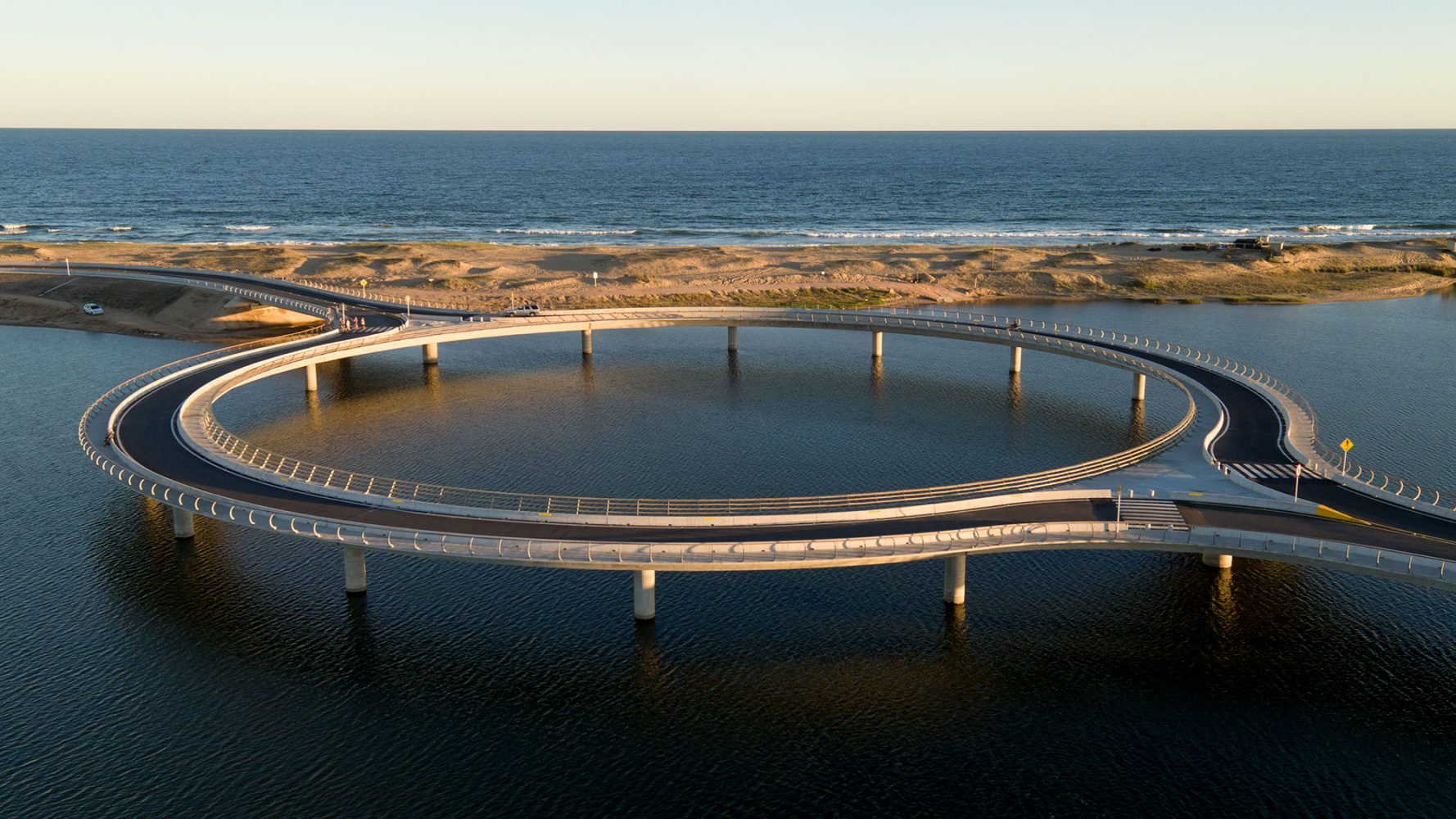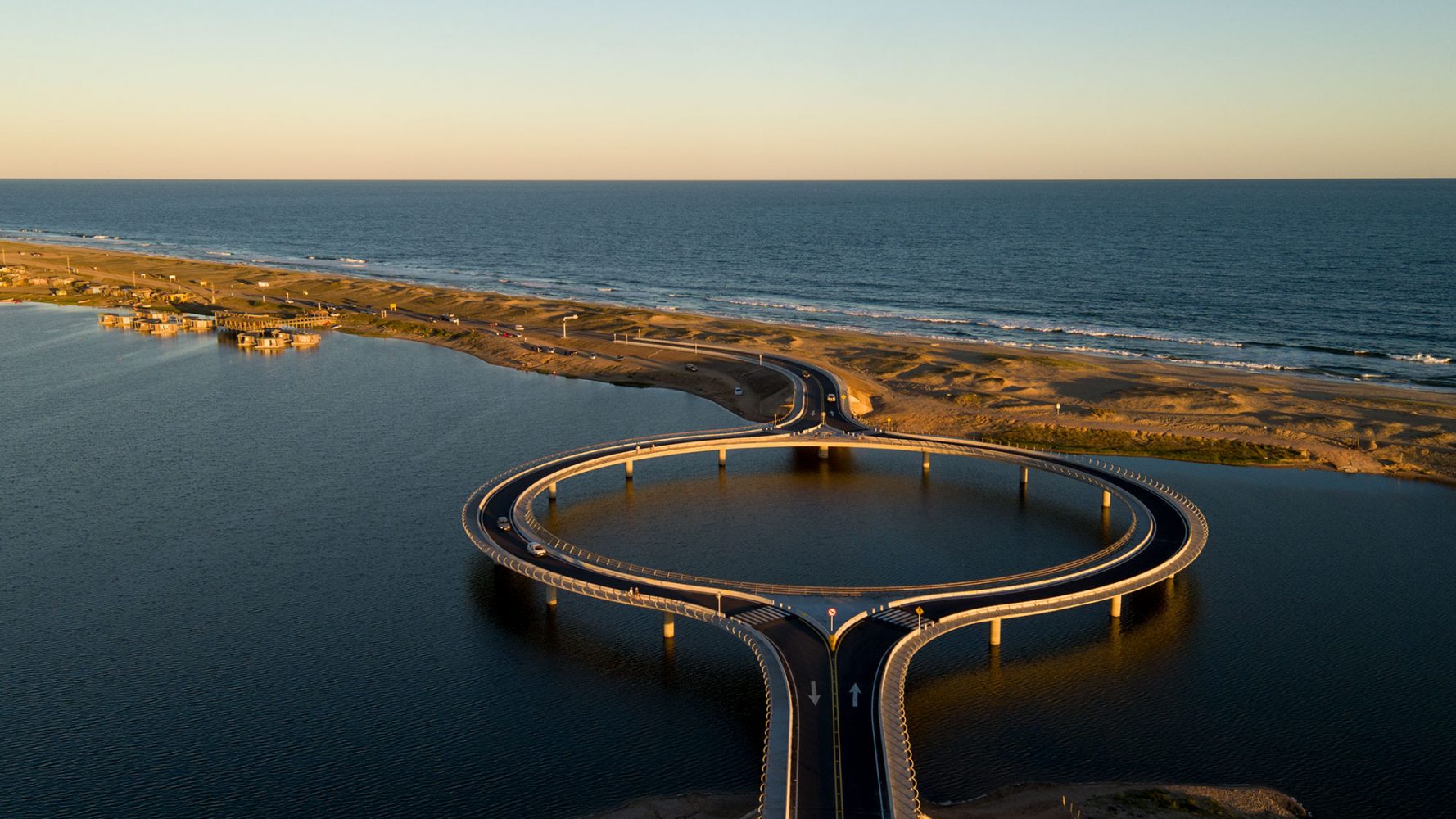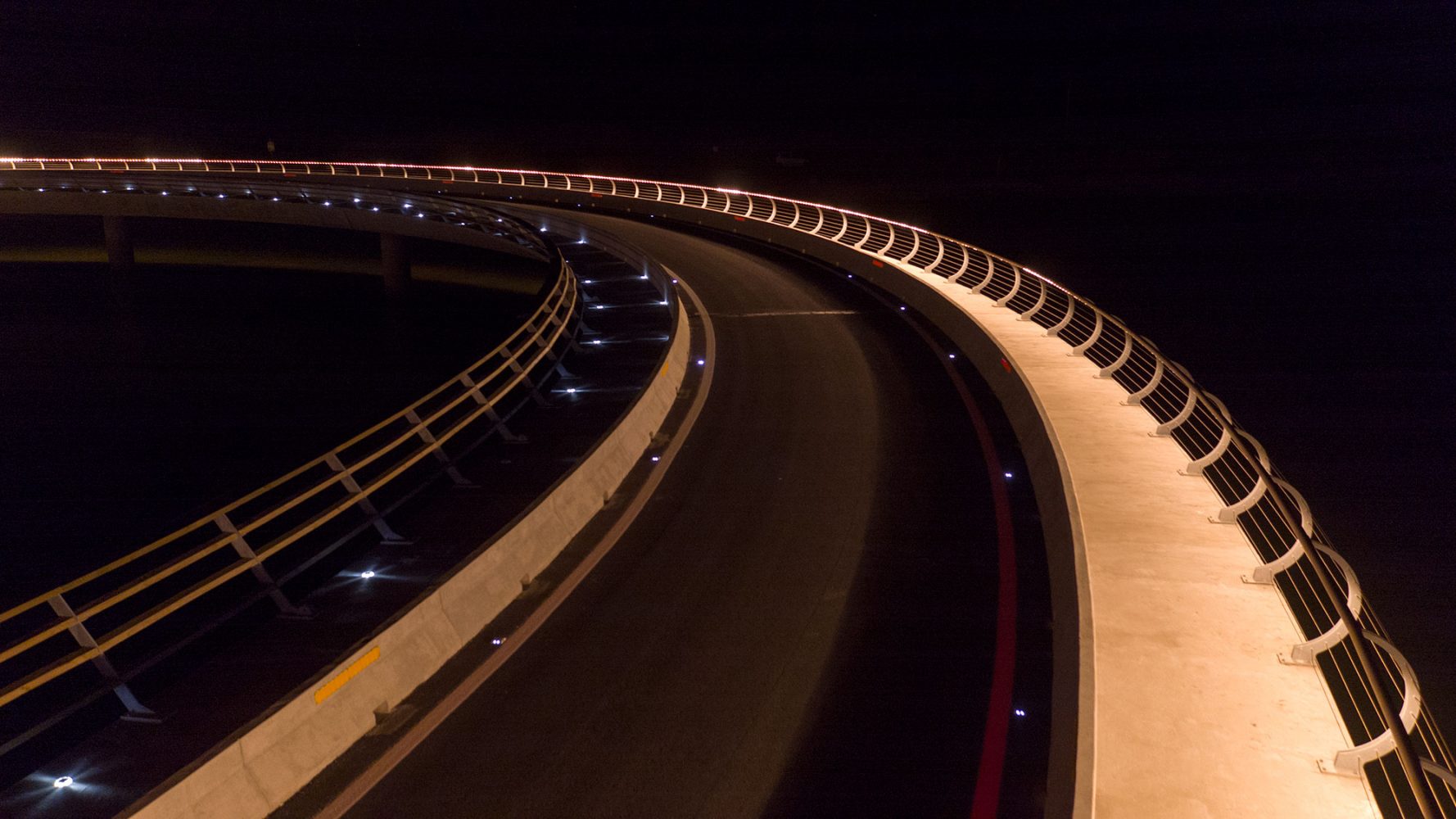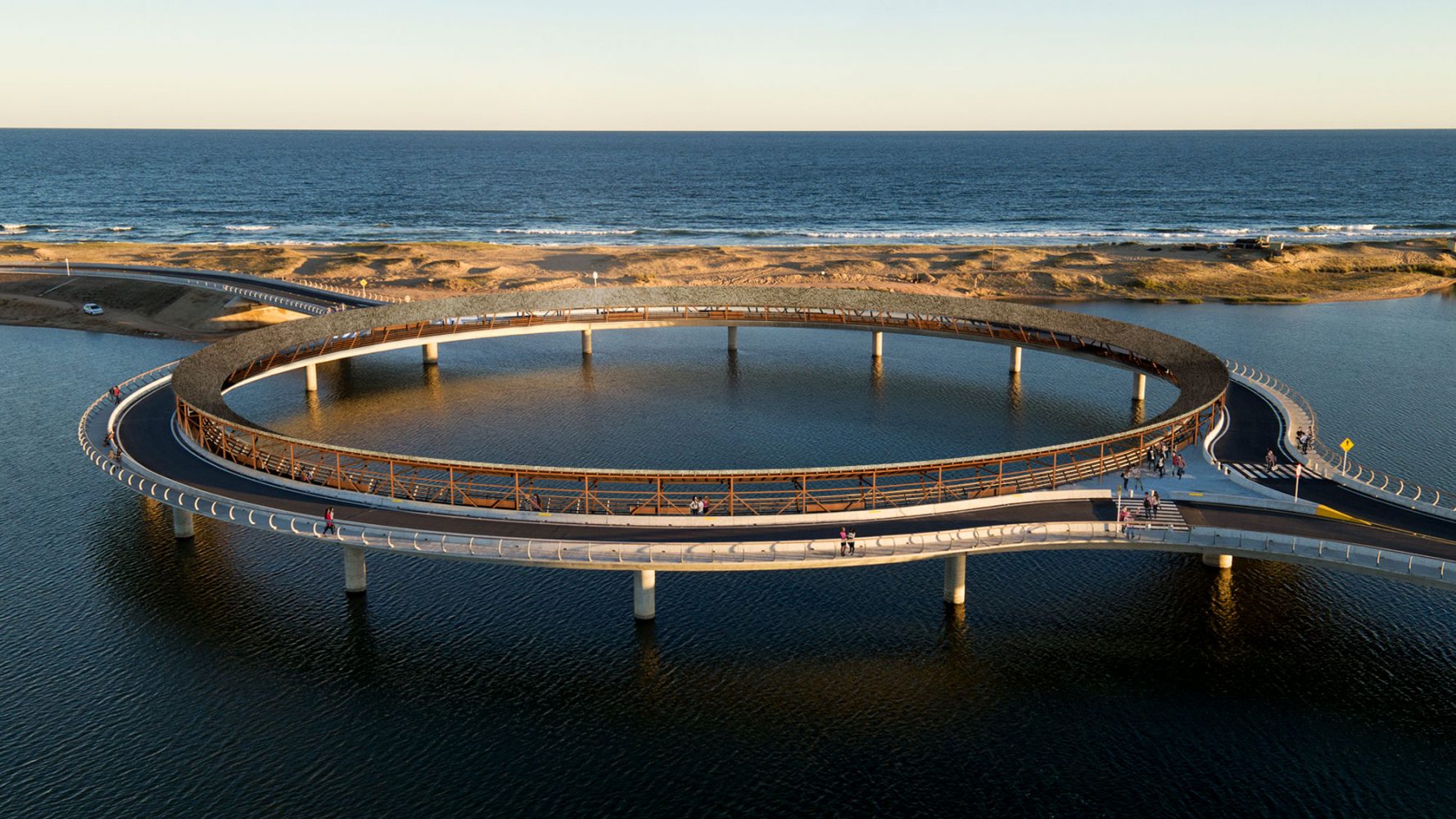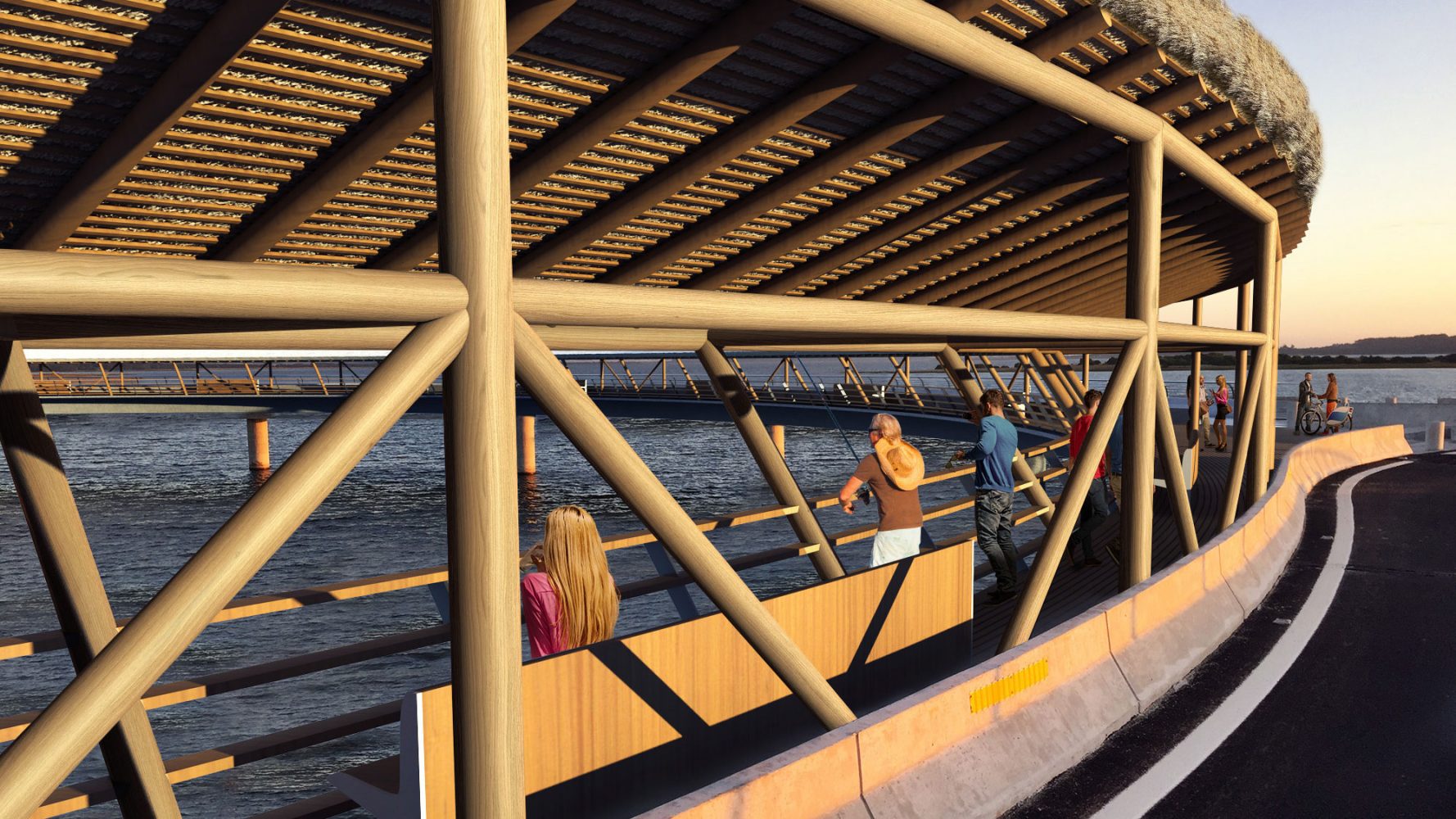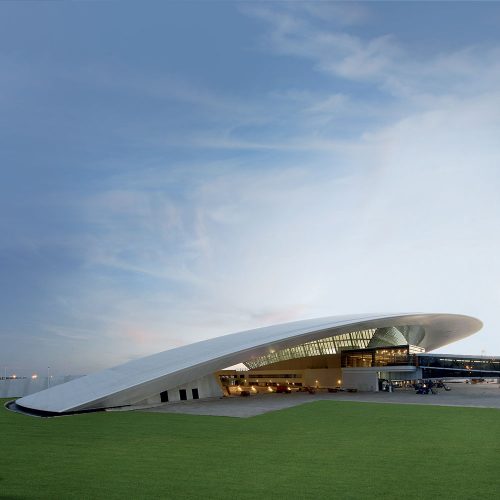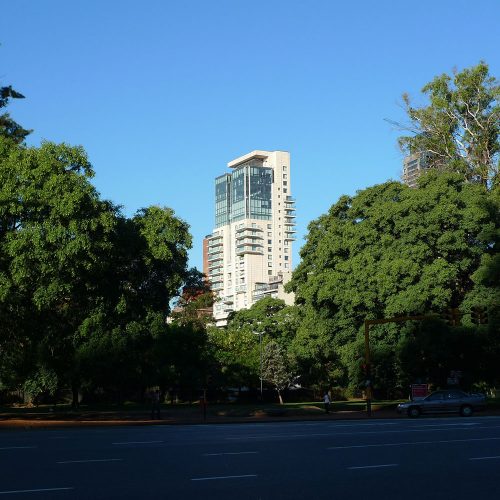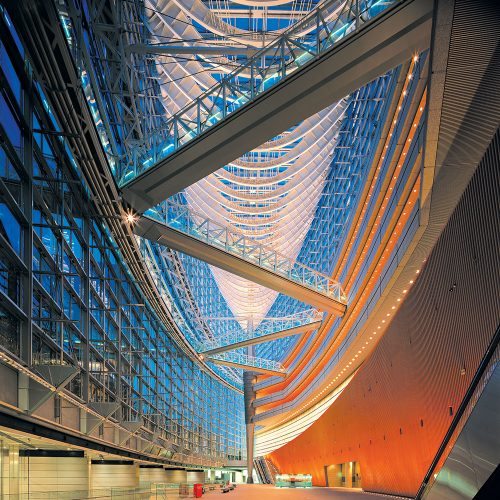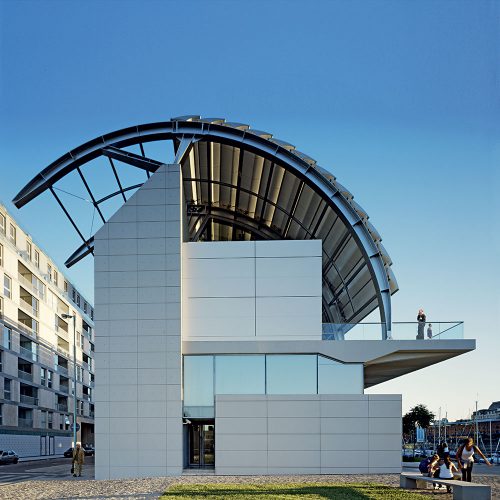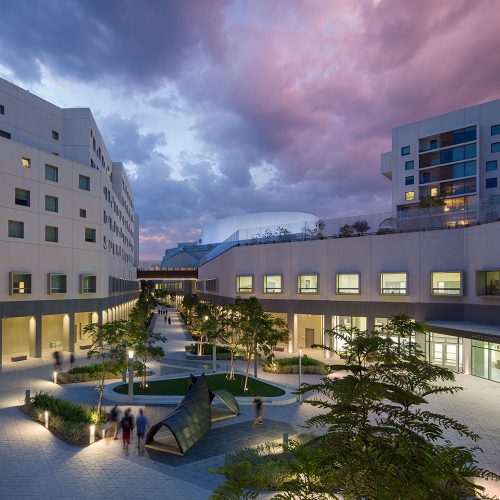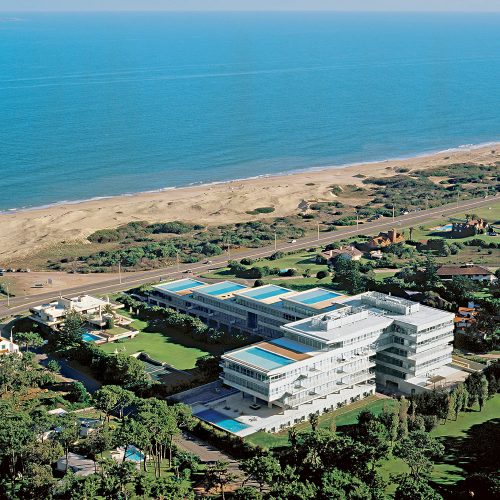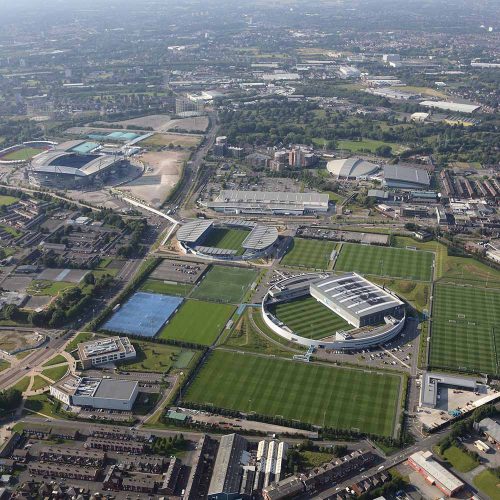Laguna Garzón Bridge
The bridge’s unusual circular road deck slow traffic and allows drivers, pedestrians, and cyclists to appreciate panoramic views to one of the most beautiful and pristine coastal landscapes in Uruguay.
The Garzón Lagoon is one of a series of environmentally sensitive bodies of water along Uruguay’s coast. The Ministry of Transport has long held interest in developing a bridge over the 4,448-acre lagoon, where it meets the coast and interrupts National Route 10. Crossing the lagoon was previously only possible via motorized rafts. Rafael Viñoly Architects’ design was chosen for its alternative solution to a typical bridge structure–a 202-meter (663-foot) ring of road sits over but does not disturb the fragile ecosystem, slows traffic inherently, and creates a pedestrian-friendly point of interest. Opened in December 2015, the bridge’s 16 round concrete pillars, placed 20 meters (65 feet) apart, support two ramps and a central ring road that crosses the lagoon. Pedestrian walkways on either side of the split traffic lanes give access to the bridge’s central opening and its perimeter, where visitors can sit, fish, and take in the views.
Tall enough for boats to pass freely underneath and engineered with the fewest possible pillars, the bridge was carefully designed to protect its existing ecosystem. By separating the circular bridge’s two roadways, the design reduces the time that any given spot on the water surface is continuously shaded as the sun moves across the sky and minimizes the contiguous area impacted by the shade, which improves light penetration and dispersal across the water column. The structure’s fairly tight turning radius also forces motor vehicles to slow significantly while crossing, and encourages drivers to take in the natural beauty of the area.
Documented as an Important Bird and Biodiversity Area, a natural ecosystem that protects regional birds and their habitats, the Laguna Garzón Bridge site is popular for birdwatching and clam harvesting, and is surrounded by panoramic landscape views. The design of the bridge minimizes its environmental impact and creates a public realm over the water.
Rafael Viñoly Architects accepted the commission for the Laguna Garzón Bridge on the condition that the new bridge would signal the end of the National Route 10, the main access road to several seaside resorts in the area. Firm Principal Rafael Viñoly lobbied Uruguayan government agencies to give the highway’s development power to local jurisdictions whose interests are more environmentally-centered.


